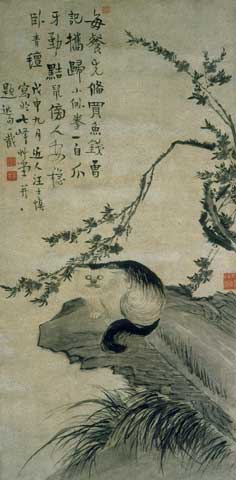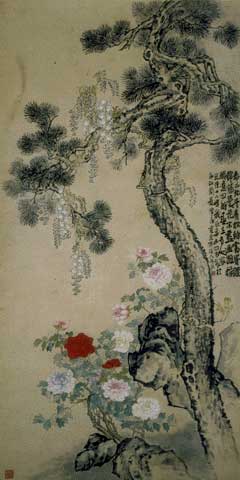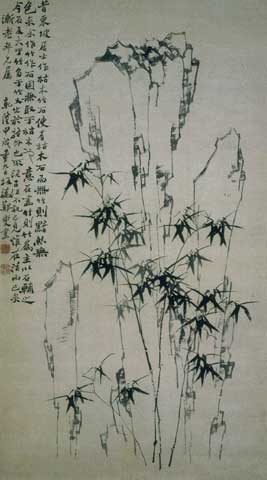| Art Q&A > Painting |
|
|
Eight Eccentric Painters of Yangzhou
Rooted in the background of that time, the eight painters were Jin Nong, Huang Shen, Zheng Xie (Zheng Banqiao), Li Shan, Li Fangying, Wang Shishen, Gao Xiang and Luo Pin. Their paintings did not follow the old brushstroke conventions, making them look strange compared with other paintings of the time. In addition, these painters were proud and uncontrolled and had bold personalities; thus they were named the Eight Eccentric Painters. Their paintings were not fully understood by many people at that time and were considered eccentric. But they opened a new era in Chinese painting history and created new flower-and-bird painting methods.
Jin Nong (1687-1764), a native of Hangzhou, was the most famous of the eight eccentrics. He was talented in many fields and started to paint in his 50s. Living a poor life, he could draw figures, flowers and birds, landscapes, but was best at picturing plum blossoms. His paintings were carefully designed with simple shapes, and his best-known paintings are Ink Plum Blossom and Moon and Flowers. He also created a unique calligraphic style, which he called lacquer calligraphy.
Huang Shen (1687-1768) was a native of Ninghua, Fujian Province. His family was poor when he was young, and he studied Huai Su's calligraphic style. His paintings also show the Cursive script style in his rough sketches. He was best at figure painting. He preferred to draw religious figures or lower class people, and his representative works include The Drunk Monk and Shepherd Su Wu.
Li Fangying (1695-1755), a native of Nantong, Jiangsu Province, spent 20 years as a county magistrate. He was on good terms with Jin Nong and Zheng Xie, and was accomplished at painting pines, bamboos, plum blossoms and orchids. In his later years, he concentrated on painting plum blossoms. His best-known works are Swimming Fish and Waving Bamboo in the Wind.
Wang Shishen (1685-1759) was a native of Xiuning, Anhui Province. He lived in a poor family when he was young and then made a living in Yangzhou by selling paintings. He lived happily in spite of his poverty and carried out painting research. He was good at drawing plum blossoms too, and his best-known painting is The Ink Plum Blossom. He and Jin Nong, Gao Xiang and Luo Pin are known as the four great plum painters of the time.
Luo Pin (1733-1799), a native of Shexian County, Anhui Province, was a student of Jin Nong. He was the youngest among the Eight Eccentrics, but had rich knowledge and a unique painting style. He refused to serve the Qing government, and led a poor life by selling his paintings. He is known for his paintings Ghost and Alcoholic Zhong Kui.
Most of the flower and bird paintings of the Eight Eccentric Painters were drawn in free sketches, and their paintings were unconventional, reflecting strong subjective moods. Their creative thinking is the valuable cultural heritage for us to study and hand down. |
||||||||||
All rights reserved. Reproduction of text for non-commercial purposes is permitted provided that both the source and author are acknowledged and a notifying email is sent to us. |
||||||||||
 |



